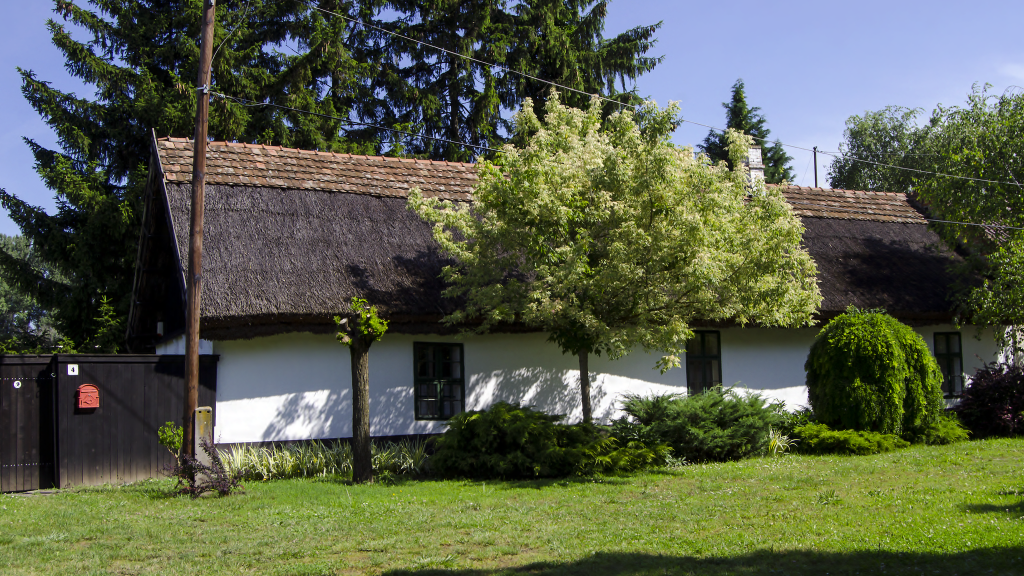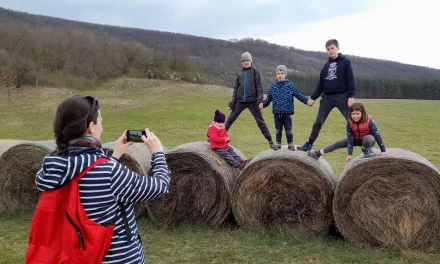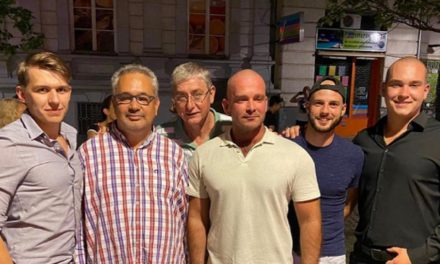The "elders of Csongrád" tell strange stories about a centuries-old manor house. The shelter with plastered walls could have been built in Turkish times.
There is an ancient house in Csongrád, the history of which dates back to Turkish times. The mansion at 4 Szent Rókus tér is considered by local historians to be the oldest building in the Alföld settlement.
Although the researchers know nothing about the original builder and owner of the house due to the considerable historical distance, the fact is that the thatched house was a witness to the burning of the palanquin castle in Csongrád, the destruction of the Turks, and their withdrawal from the area. According to the older residents of Csongrád, a tunnel once stretched from the house that functioned as a parish to the main altar of the inner city church built nearby.
Next to the palanquin castle
According to Mátyás Bél, the patinated house was built in the 17th century and "could have survived" the withdrawal of the Turks.
On September 2, 1686, the Turkish crescent with a ponytail fell from the minaret of the main mosque in Buda. On October 23, the Turkish guard of the Szeged castle, which had been shot to ruins, also surrendered. The command of the Turkish defenders of Csongrád hesitated for a short time, whether they should take advantage of the palanquin's favorable position and attempt to defend themselves. However, when the promised help from the great leader failed, they decided not to wait for the encirclement and to withdraw from Csongrád.
In the evening of October 25, 1686, cannons and chariots rolled out of Csongrád Castle, and Turkish soldiers plundered the town. Among the Hungarian residents who could, they fled to the other side of the river and threw themselves into the reeds.
The retreating Turkish soldiers looted and destroyed the inhabitants without mercy. As the culmination of the atrocities, the settlement built on the old earthen castle was set on fire, but the fire that consumed the thatched houses quickly spread to the palanquin castle as well. At that time, Csongrád's second castle also burned to the ground. This house stood next to the northern bastion of the Turkish-era castle
- Orsolya Gyöngyössy, an ethnographer, Multicultural Region
According to the deputy director of the László Tari Museum in Csongrád, the chapel of Saint István, built of reeds, probably stood at the western end of the house's plot. It was the only Roman Catholic church in Csongrád at the time, which was built in 1704, later rebuilt, and burned down around 1715.
Csongrád became the property of the Károlyi family in 1722, at that time it was a manor house and then a parish. Residential building from the end of the 18th century. It also includes the continuously added residential building.

Source: László Tari Museum
They plastered the walls with mud
Most of the ancient part of Csongrád burned down when the Turks withdrew, if there were any houses left, even the experts don't know what they might be.
The old manor house is currently privately owned, the Historia Domusa of the Church of Our Lady in Csongrád provides more detailed information about its former state. According to this, the manor house was built of baseless battered walls, with a gable roof with throat beams and thatched roof, with 5 rows of tiles on top.
The western side is decorated with a water-jetted board gable. There were three windows in the southern part of the building and one in the northern side, as well as a porch with brick columns and a brick parapet. At the eastern end of the building was a traditional summer kitchen with apothecary walls.
The house has three sections, at the front, through the porch, you can access the pantry, the floor of which was once made with mud. The attic access opens from this room, and the basement access next to it. It is particularly interesting that the basement with master beams can also be accessed from the room opening from the kitchen through a door. A window was also created on the south side the boarded cellar All rooms in the house have wooden beamed ceilings, the attic is plastered.
Mysterious tunnels
Many local beliefs and assumptions are also connected to the century-old building. According to one of the popular ideas still alive today, the entrance to a tunnel starts under the main altar of the church in the inner city, which connects the building with the former parish.
Others remember that the tunnel passes under the Tisza, and that its exit could be somewhere at Mentettré on the other bank.
What is certain is that in the 1970s and 1980s traces of a tunnel system were discovered under certain streets of the Inner City, which may have also affected the former parish residence
explained the museologist.
In a study edited by Orsolya Gyöngyössy, a local resident, Erzsébet Varjúné, told an interesting story about the manor house.
"In the mid-1950s, I visited Aunt Vincze many times. I bought lettuce, parsley and green onions from him. She was a talkative aunt, she told me on one occasion that her house was the parish building belonging to the church. There was a cellar door in the open corridor. A road led from the basement under the church for a while. I begged him to let me go down to look. I remember that an 8-10 meter road started from the basement, with a collapse at the end"
- remembered the woman from Csongrád.
We used Orsolya Gyöngyössy's study: Priests, church servants and religious life in Csongrád-Belsőváros .
Featured image: László Tari Museum













